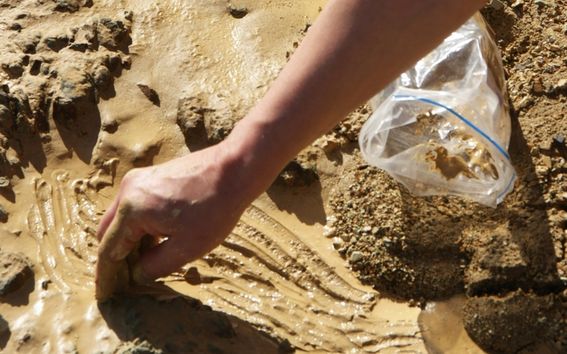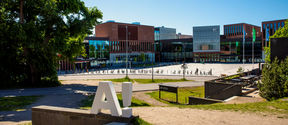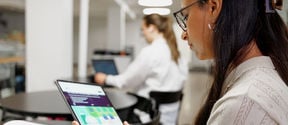Environmental issues get form by ceramic art

Working with Soil, an artistic research project at Aalto University's Department of Design, has been selected as one of the projects for Research Pavilion #3 in Venice. The University of the Arts Helsinki together with its international partners will create a research pavilion in connection with the Venice Biennale between May and August 2019.
Working with Soil will be implemented as a research laboratory that will focus on the issues related to the contamination of soil with the help of artistic methods. The research will utilise local soil that has become contaminated due to the actions taken by both industry and society as well as silt collected from the bottom of the sea. The project will be implemented in collaboration with the Finnish Environment Institute's contaminated land experts.
“As artists and researchers, we want to literally get our hand dirty with this contaminated soil and highlight it as part of the artistic process and the works of art that we create. We hope that by visualising what is usually considered invisible, we can concretely present the effects that humans have on the environment,” explains the leader of the project, Aalto University Professor Maarit Mäkelä.
Research, information and art
The work will be divided into three phases. In the first phase, the group of artists responsible for the exhibition will embark on two sample collection trips to the glass manufacturing area in Murano, the maritime industry area in Porto Marghera, and historic Venice. The hazardous materials contained in the samples will be analysed in a local laboratory.
Between May and June 2019, Research Pavilion #3 will contain an open laboratory where the public can follow the ceramic artists as they work with the collected local soil materials. The process will be capped off at an event in August where the artists will present the different phases and results of their work and the Finnish Environment Institute's expert will hold a lecture on the contamination of European soil.
“There are no simple solutions to the complicated global challenges we face today. Art and artistic research introduce new perspectives on phenomena that would otherwise be hard to grasp. Uniarts Helsinki is a pioneer of artistic research, and we want to actively create international networks in the field”, says Jari Perkiömäki, Rector at Uniarts Helsinki.
A significant problem in Europe
Land areas that have become contaminated due to long-term exposure to hazardous materials have become a significant environmental problem in Europe. An estimated 2.8 million areas in Europe are suspected or have been determined to contain contaminated soil. Surveying and repairing these areas is estimated to cost between 2.75−4.6 billion euros annually.
Hazardous materials enter the soil as a result of the neglectful or improper handling of chemicals and waste. The emissions by these materials usually originate from chemical accidents that have occurred years ago or from standard industrial activities. Landfills or waste from other locations can also contaminate soil. Thus, the reason can be traced back to the “old sins” related to common human activities. The most usual contaminants found in soils are heavy metals, PHCs, PAH compounds and chlorinated solvents.
Another artistic research project from Aalto University, Artistic Intelligence Research Alternator (AIRA), will also participate in the research pavilion in collaboration with the University of the Arts Helsinki's Disruptive Processes project.
The Research Pavilion is an ongoing project created and hosted by Uniarts Helsinki. Research Pavilion #3 is created in cooperation with the Louise and Göran Ehrnrooth Foundation and international partner institutions. The main partners are Aalto University, Valand Academy of Arts at the University of Gothenburg, University of Applied Arts Vienna, Interlab Hongik University Seoul, and Taipei National University of the Arts.
More infomation:
Professor Maarit Mäkelä, Aalto University, tel. +358 50 3722 168, [email protected]
- Published:
- Updated:
Read more news

Seed funding available to boost collaboration between Aalto, KU Leuven and University of Helsinki
Aalto University, KU Leuven and the University of Helsinki launch the 2nd exploratory seed funding call to explore research collaboration possibilities. The funding call is open until 10 September 2024.
Professor Peter Hans Matthews works as a Fulbright-Aalto Distinguished Chair scholarship holder at the Department of Economics
Fulbright programmes and scholarships are highly appreciated in the United States
Aalto EE Introduces Alex: A New Learning Experience Platform to Transform Lifewide Learning and Tackle Upskilling Challenges
Aalto University Executive Education (Aalto EE) is launching the first version of Alex in June, a learning platform designed to enhance continuous professional development. Alex offers personalized learning journeys, micro-credentials, and professional development programs, aligning current skills with industry needs. This platform, which continuously evolves with new features like mobile access and AI integration, sets a new standard for professional development in Finland.